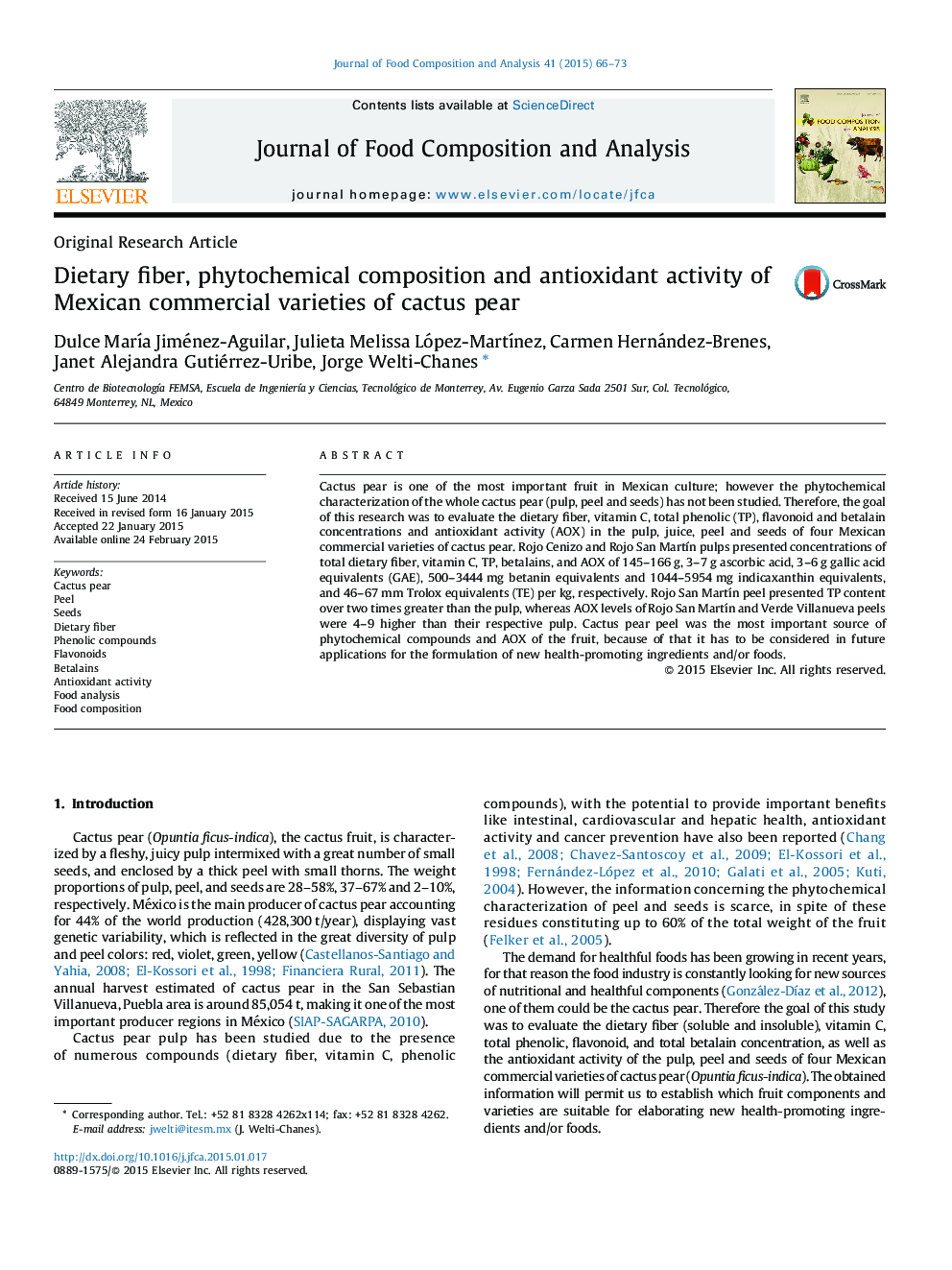| Article ID | Journal | Published Year | Pages | File Type |
|---|---|---|---|---|
| 1218223 | Journal of Food Composition and Analysis | 2015 | 8 Pages |
•Cactus pear is a great source of phytochemical compounds to elaborate healthful foods.•Rojo San Martín and Rojo Cenizo varieties showed the highest levels of betalains.•Seeds are the poorest sources of studied phytochemical compounds in a cactus pear.•Cristal peel has an antioxidant activity four times greater than its pulp.•Quercetin, kaempferol and isorhamnetin are present only in cactus pear peel.
Cactus pear is one of the most important fruit in Mexican culture; however the phytochemical characterization of the whole cactus pear (pulp, peel and seeds) has not been studied. Therefore, the goal of this research was to evaluate the dietary fiber, vitamin C, total phenolic (TP), flavonoid and betalain concentrations and antioxidant activity (AOX) in the pulp, juice, peel and seeds of four Mexican commercial varieties of cactus pear. Rojo Cenizo and Rojo San Martín pulps presented concentrations of total dietary fiber, vitamin C, TP, betalains, and AOX of 145–166 g, 3–7 g ascorbic acid, 3–6 g gallic acid equivalents (GAE), 500–3444 mg betanin equivalents and 1044–5954 mg indicaxanthin equivalents, and 46–67 mm Trolox equivalents (TE) per kg, respectively. Rojo San Martín peel presented TP content over two times greater than the pulp, whereas AOX levels of Rojo San Martín and Verde Villanueva peels were 4–9 higher than their respective pulp. Cactus pear peel was the most important source of phytochemical compounds and AOX of the fruit, because of that it has to be considered in future applications for the formulation of new health-promoting ingredients and/or foods.
